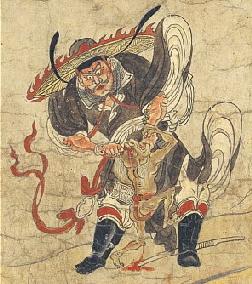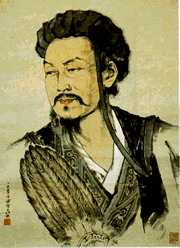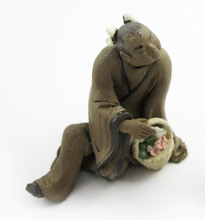
Only until recently have I learned from a Japanese bonsai friend that Zhong Kui (鍾馗 in Chinese) is not only a well-known mythology character in Chinese culture, but also in the Japanese culture. Well, I shouldn’t be too surprised since there is so much in common between the two cultures.
In Japanese, Zhong Kui is called Shoki.
The Story of Zhong Kui
It is said that Zhong Kui is the deity who is the king of 80,000 ghosts and demons. According to folklore, Zhong Kui (712-756 AD) was a physician in the Tang era, a man with a very ugly appearance. To advance his career, he took the national examination at the capital and performed brilliantly, scoring the highest among all applicants. But due to his ugly appearance, Zhong Kui was rejected by the emperor. In shame and anger, Zhong Kui committed suicide in front of the emperor. Regretted his wrong committed, the emperor ordered that Zhong Kui be buried with the highest honor. After death, Zhong Kui became the king of ghosts in Hell, and in gratitude, Zhong Kui vowed to be a vanquisher of evil spirits.


The bat is often seen together with Zhong Kui as a symbol of good fortune and happiness.

Look closer, you will find a red bat on the tip of Zhong Kui’s folding fan.
Protector against Evil Spirits & Illness
In China, like many other Feng Shui items, Zhong Kui’s paintings and statues are often placed at the household entrance as a guardian spirit, as well as in places of business with high-valued goods. In Japan, during Edo-period (1615-1868), Shoki was very popular. People hung images of Shoki outside their houses to ward off evil spirits during the Boys’ Day festival (May 5 of each year). Nowadays, Shoki is relatively neglected, except in Kyoto, where residents still decorate their houses with Shoki’s statues to ward off evil and illness, and to protect the male members of the family.





























































